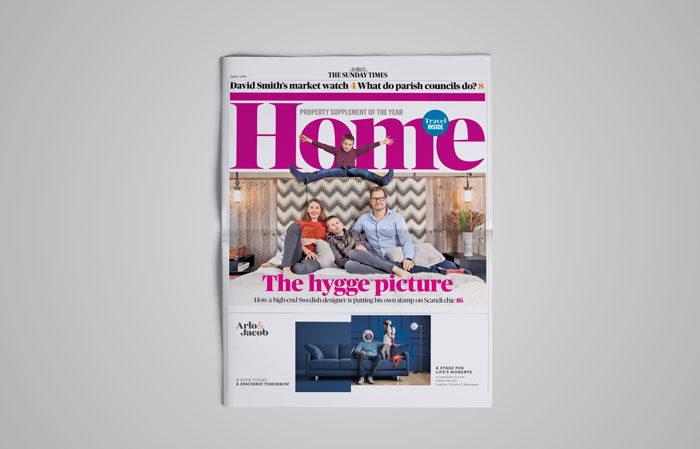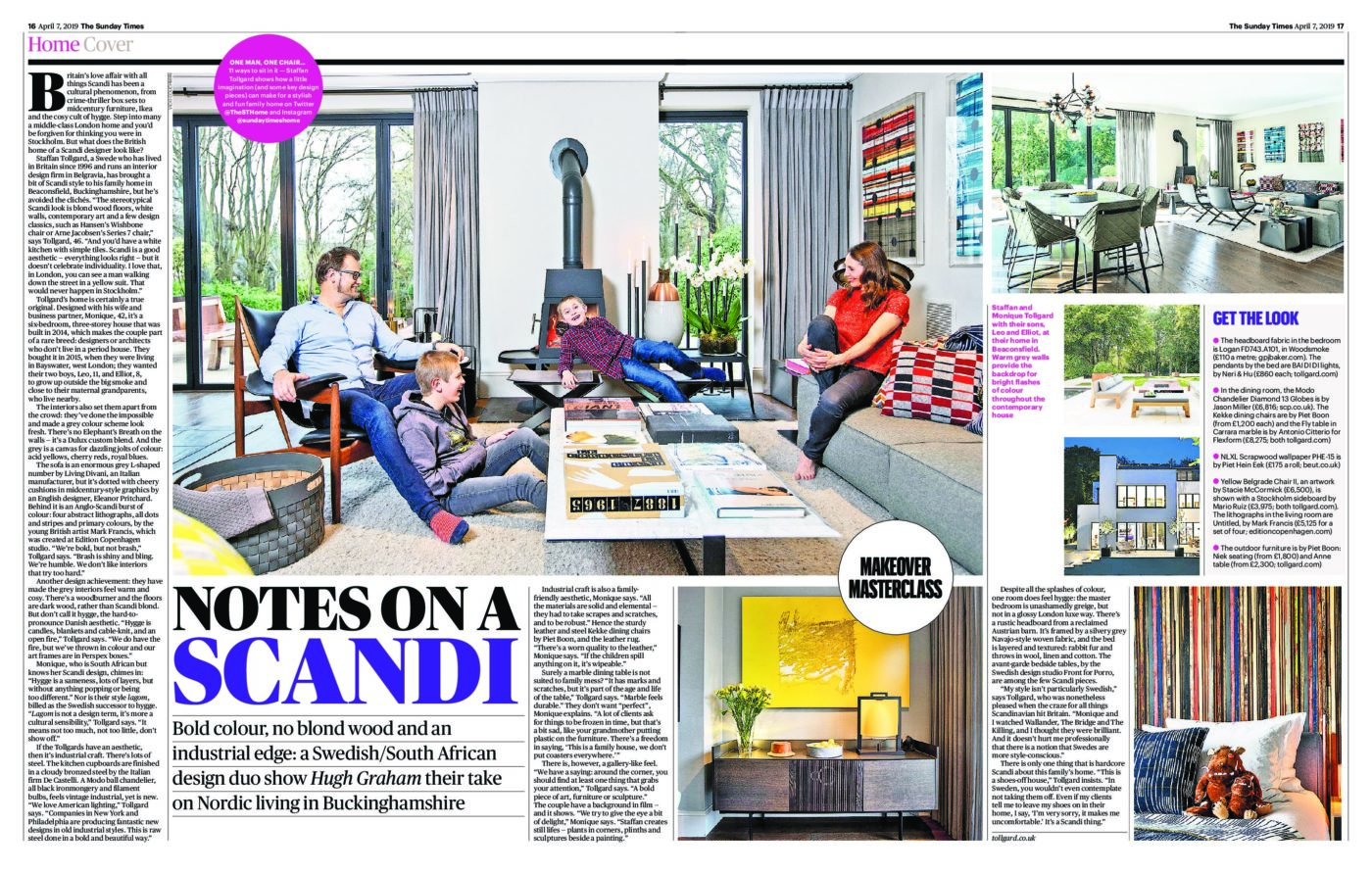Britain’s love affair with all things Scandi has been a cultural phenomenon, from crime-thriller box sets to midcentury furniture, Ikea and the cosy cult of hygge. Step into many a middle-class London home and you’d be forgiven for thinking you were in Stockholm. But what does the British home of a Scandi designer look like?

Staffan Tollgård, a Swede who has lived in Britain since 1996 and runs an interior design firm in Belgravia, has brought a bit of Scandi style to his family home in Beaconsfield, Buckinghamshire, but he’s avoided the clichés. “The stereotypical Scandi look is blond wood floors, white walls, contemporary art and a few design classics, such as Hansen’s Wishbone chair or Arne Jacobsen’s Series 7 chair,” says Tollgard, 46. “And you’d have a white kitchen with simple tiles. Scandi is a good aesthetic — everything looks right — but it doesn’t celebrate individuality.
I love that, in London, you can see a man walking down the street in a yellow suit. That would never happen in Stockholm.” Tollgard’s home is certainly a true original. Designed with his wife and business partner, Monique, 42, it’s a six-bedroom, three-storey house that was built in 2014, which makes the couple part of a rare breed: designers or architects who don’t live in a period house. They bought it in 2015, when they were living in Bayswater, west London; they wanted their two boys, Leo, 11, and Elliot, 8 , to grow up outside the big smoke and close to their maternal grandparents, who live nearby.
The interiors also set them apart from the crowd: they’ve done the impossible and made a grey colour scheme look fresh. There’s no Elephant’s Breath on the walls — it’s a Dulux custom blend. And the grey is a canvas for dazzling jolts of colour: acid yellows, cherry reds, royal blues. The sofa is an enormous grey L-shaped number by Living Divani, an Italian manufacturer, but it’s dotted with cheery cushions in midcentury-style graphics by an English designer, Eleanor Pritchard. Behind it is an Anglo-Scandi burst of colour: four abstract lithographs, all dots and stripes and primary colours, by the young British artist Mark Francis, which was created at Edition Copenhagen studio. “We’re bold, but not brash,” Tollgard says. “Brash is shiny and bling. We’re humble. We don’t like interiors that try too hard.” Another design achievement: they have made the grey interiors feel warm and cosy.
There’s a woodburner and the floors are dark wood, rather than Scandi blond. But don’t call it hygge, the hard-topronounce Danish aesthetic. “Hygge is candles, blankets and cable-knit, and an open fire,” Tollgard says. “We do have the fire, but we’ve thrown in colour and our art frames are in Perspex boxes.” Monique, who is South African but knows her Scandi design, chimes in: “Hygge is a sameness, lots of layers, but without anything popping or being too different.” Nor is their style lagom, billed as the Swedish successor to hygge. “Lagom is not a design term, it’s more a cultural sensibility,” Tollgard says. “It means not too much, not too little, don’t show off.” If the Tollgards have an aesthetic, then it’s industrial craft. There’s lots of steel.
The kitchen cupboards are finished in a cloudy bronzed steel by the Italian firm De Castelli. A Modo ball chandelier, all black ironmongery and filament bulbs, feels vintage industrial, yet is new. “We love American lighting,” Tollgard says. “Companies in New York and Philadelphia are producing fantastic new designs in old industrial styles. This is raw steel done in a bold and beautiful way.”
To read the full article click here

To read more articles click here

